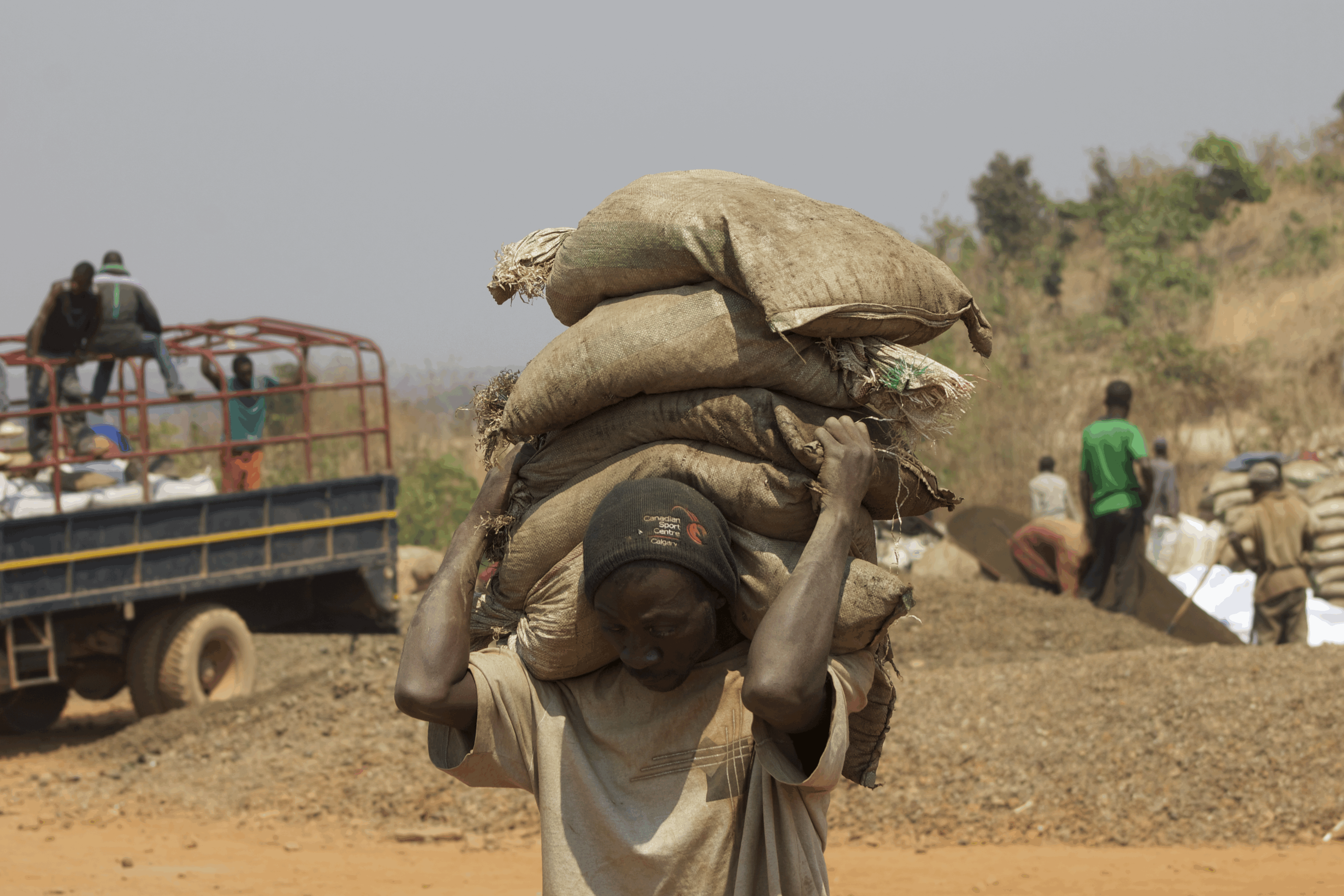By Ibond Rupas A’nzam, POM, JH Democratic Republic of Congo

A miner transporting bags of raw cobalt in an artisanal mining site near Lumumbashi, DRC. Photo credit: Valery Nodem
The Democratic Republic of Congo (DRC) has important mining resources. Historically, the mining sector has been the driver of the national economy. Adopting a Mining Code in 2002, the DRC liberalized its mining sector. That liberalization contributed to the increase of metal prices on international markets and permitted the DRC to attract more private investors, particularly in the copper area of Katanga.
Many private mining companies around the country, particularly in Katanga, are in the production phase. If we consider the copper production for example, production was at 9,000 tons in 2003, it grew to 620,000 tons in 2012 and 920,000 tons in 2013. The estimates for 2014 are over 1 million tons.
However, this mining boom has failed to improve the standard of living for local communities. In some cases, the boom has exacerbated poverty and environmental degradation. There are many cases in which mining activities have resulted in the pollution of water, soil and air. Additionally, mining companies are grabbing agricultural lands, the lands on which families have been growing food to feed themselves and communities, to expand mining sites. Some villages are even being forced to relocate.
According to the Joining Hands network in the DRC, the Platform of Civil Society Organizations Working in the Mining Sector (POM), one of the main reasons for this situation is the failure of mining companies to fulfill their financial, social and environmental obligations, whether legal or contractual. These obligations are not always known and understood at the local level since contracts are signed at the national level, and there is often a lack of technical knowledge and logistical support for the effective control and monitoring of mining activities. Furthermore, local communities are often not equipped to mobilize and claim their rights under the Mining Code and other agreements between the companies and the Government.
POM is focusing on the following in order to problem solve this situation:
Building the capacity of civil society organizations and communities living around mining sites to analyze contracts and monitor the obligations of mining companies.
Copies of the laws and agreements are shared with community members and explained so that people are able to understand what is contained in them. People have been shocked to see how much mining companies are contractually required to invest on the ground as a way to compensate some of the negative impacts of their operations.
Developing case studies and accompanying community initiatives to monitor mining company obligations.
POM is currently working on a case study about monitoring the obligations of the company Tenke Fungurume Mining (TFM). TFM operates in a mining basin located about 200 km from the city of Lubumbashi, capital of the mineral-rich Katanga Province. Freeport McMoRan Inc, a US company based in Phoenix, Arizona, owns up to 56% of the shares of TFM. At present, mining investment in TFM has been approximately $3 billion and represents the largest mining investment in the DRC.
The case of TFM is an important one because TFM established a community fund, which is being promoted as a model that all mining companies should replicate, where 0.3% of the company’s net income is dedicated to local development. However, POM’s research has found that the contract which establishes the community fund is very vague in both detailing the structure that will manage the funding and the process for how funds will be managed to have a long-lasting impact. From 2009 to date, more than $14 million have been generated by the fund. So far, about one third of the funding has been expensed; the balance is kept in the company’s accounts in the US. POM found that local communities were often not involved in the selection or the execution of local development projects by the fund, which has resulted in the building of infrastructures for which the communities have no use.
In this specific case, POM’s main recommendations have been to: 1) involve local communities better so that projects effectively respond to local needs; and 2) create more transparency in the planning process so that people can be at the center of their own development.
![]() You may freely reuse and distribute this article in its entirety for non-commercial purposes in any medium. Please include author attribution, photography credits, and a link to the original article. This work is licensed under a Creative Commons Attribution-NonCommercial-NoDeratives 4.0 International License.
You may freely reuse and distribute this article in its entirety for non-commercial purposes in any medium. Please include author attribution, photography credits, and a link to the original article. This work is licensed under a Creative Commons Attribution-NonCommercial-NoDeratives 4.0 International License.